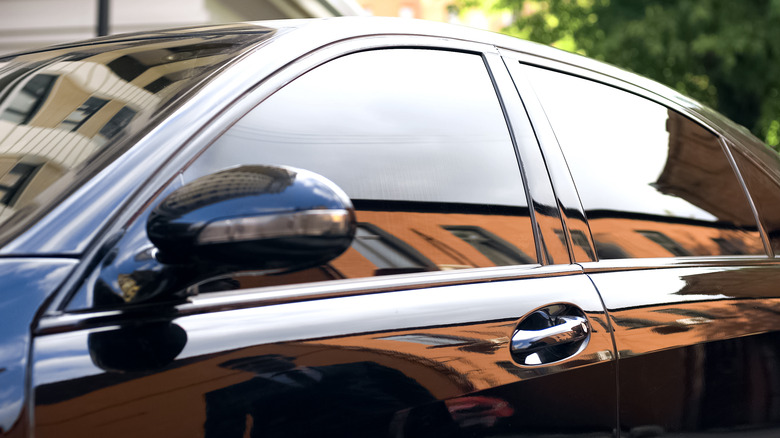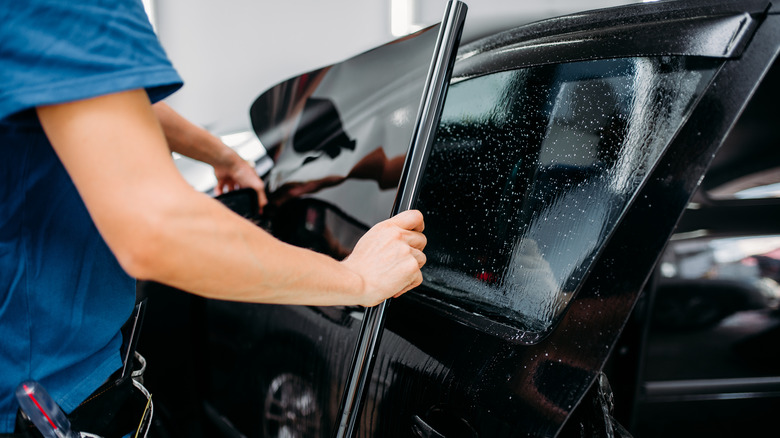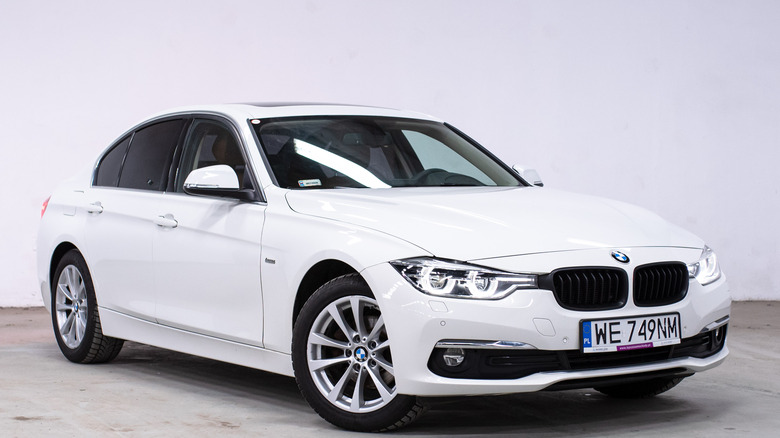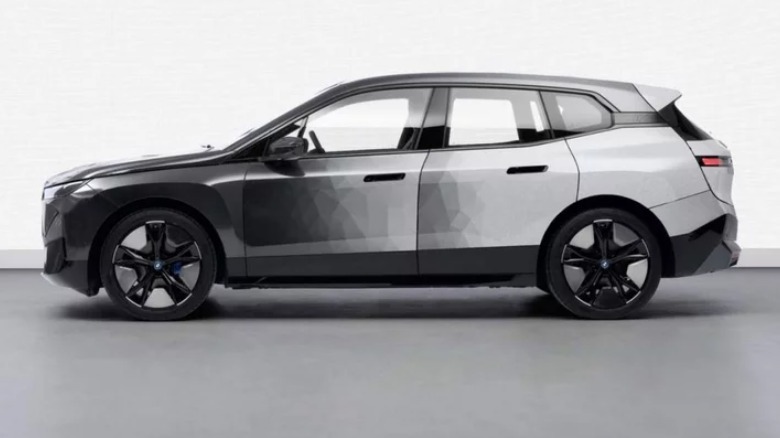The Reason Dark Window Tint Is Banned In Almost Every State
You don't have to be rich or famous to enjoy the benefits that tinted windows bring to your car. Most cars these days come with built-in window tint as a standard feature, but if you want something darker, you can also opt for an after-market tint that goes right over the factory tint.
Window tinting involves placing a thin laminate film inside a vehicle's windows or windshields to darken them. Aside from benefits like extra privacy and making your ride look even cooler, research suggests that tinting helps reduce glare, keeps your car from heating up, and offers protection against harmful UV rays. Additionally, recent studies of UV exposure in cars, drivers, and passengers who were closest to non-tinted windows showed the most UV exposure (via Science Direct).
In the U.S., drivers who apply dark tints to their cars might land in hot water with the authorities. There are specific laws that regulate how dark drivers tint their windows which vary according to state. But, with few exceptions, most states limit tint levels on vehicle windows.
Dark window tint is mostly illegal
Despite its benefits, there are negatives to installing window tints — especially extremely dark window tints on your vehicle. The most obvious reason is that the darkened glass may impede your sight, so you may miss people, cars, or potential hazards while driving. The American Automobile Association (AAA) reports in Via, its bi-monthly magazine that "tinted windows can also prevent a driver from communicating their intentions to other drivers and pedestrians, and vice versa, making driving inherently less safe."
Also, a car whose windows are darkly tinted can sometimes pose a danger to police officers who perform routine traffic stops and are not sure of what's happening inside the car. Toledo police officer John Winger highlighted these risks when he told ABC news that "if there's somebody in the back seat here with a firearm or any intention of doing him harm, they're pretty much able to do that."
What is Visual Light Transmission?
States regulate window tinting on vehicles according to a VLT or Visible Light Transmission measurement. VLT refers to the percentage of light that can filter through your tint. For example, if you have a 30% VLT, your tinted window is going to let 30% of light into your vehicle. The lower the percentage, the darker the tint, and the less likely light is able to come through (via AAA).
These laws are not exactly straightforward — percentages differ whether the tints on the side front, side back, or rear windows. Also, you cannot tint your windshield in any state unless it's the top few inches above the windshield's AS1 line (via Autoblog). States such as Arkansas allow VLT percentages on the front side and rear side windows to be as much as 25% light transmission and rear windows to have 10% light transmission (via Jerry). On the other hand, there are states that have stricter rules like New Jersey, which restricts tints on the windshield or front side windows of vehicles but allows tints on all rear windows.
Penalties for having tinted windows vary according to state. For example, in North Carolina, if you're busted for an illegal window tint, the fine is about $50 plus court appearance fees which could cost around $238.
The future of tints could be digital
In future, though, car modders with a taste for tints but a reluctance to pay fines may have some high-tech options to consider. E Ink may be best known for its ereader displays, the paper-like digital panels that Amazon and others rely on for their portable ebook readers, but the company's ambitions don't stop there. Back in 2019 it revealed JustTint, a variable tint film which could be applied to windows, doors, and other surfaces, and change its opacity between nearly transparent and opaque at the touch of a button.
It's yet to show up in production automotive applications, but the possibilities haven't stopped there — or, indeed, in windows alone. BMW's iX Flow concept teased the potential for a completely tinted car earlier this year, an electric SUV covered in digital tint film and which could switch from dark to light instantly. By laser-cutting strips of the film and applying them to the bodywork, different pattens can be created too.
While it might seem gimmicky, just like fans of tinted windows point out the cabin cooling advantages of darker glass, so BMW is highlighting just how useful a color-changing car might be in ever more extreme climates. In the sun, a white surface reflects more heat; on cooler days, a darker car could absorb more heat and cut down on how much active heating is required. The same argument could potentially apply for electronically tinted windows, delivering the benefits of heavily smoked glass when parked, but returning to legal levels when on the road.



